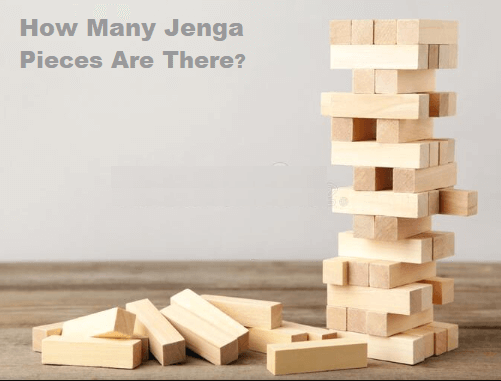Wooden toys are healthy, safe, and inspiring for children; they are also beautiful and durable. Some of the earliest toys ever discovered were made of wood.
A simple, beautifully crafted wooden toy can capture a child’s interest without overwhelming it and spark the imagination without dictating it.
Benefits of Wooden Toys for Babies and Toddlers
1. Safety
One of the biggest benefits of wooded toys is they are safe. All toys that come into contact with babies or children should be safe, especially as babies love to explore with their mouths open! Many plastic toys contain chemicals and harmful substances such as BPA and phthalates; some may even have trace amounts of lead in their paint!
On the other hand, wood is a baby-safe natural material, and some tree species have been found to possess antibacterial properties! Wooden toys are also more durable than plastic ones, break much less frequently, and can easily be repaired in an accident. When plastic toys break, they often leave sharp, jagged edges that are dangerous to babies and children.
2. It helps children to focus
Research shows that play and learning environments that feature natural elements like trees help children focus and calm down more than other types of spaces. More specifically, when you touch a tree, children are physically calmed down.
That means playing with wooden toys can have neurological effects on children’s brains. A 2017 National Institutes of Health study found that contact with trees induces physiological relaxation.
In an age of overstimulation and constant input, toys that create a quieter, more sustained play environment can significantly help young children and their cognitive development.
3. Development
Play is essential for optimal child development because it contributes to a child’s cognitive, physical, social, and emotional well-being.
Wooden toys have a natural texture that stimulates children’s senses to touch, feel, and explore each surface of the toy, and the basic shape of the toy helps develop hand-eye coordination.
Wooden toys stimulate children to interact and cooperate with others. Not only do they learn by watching others play with toys and wooden blocks with someone, but they also begin to share ideas, build relationships, learn to listen and understand, and develop empathy for others.
Wooden toys also support cognitive growth in children, improving thinking processes, reasoning, and logic. You can help children in this area by grabbing and lifting wooden blocks and toys, balancing and stacking, merging and sorting.
In this way, children learn to draw logical conclusions and understand physical properties and the basic rules of physics (weight, volume, geometry, etc.).
4. Promote creative
The toy market is full of flashing lights, vivid colors, screens, and loud noises. While these features provide immediate gratification too young children, they tend to block opportunities for problem-solving and imaginative play.
Because wooden toys tend to be simpler, they support cognitive milestones in a way that colorful toys cannot. For example, babies understand cause and effect more clearly around nine months. When you hit a block on the ground, it makes a sound, and when you drop it, it disappears from view.
Wooden toys, such as a set of blocks or simple puzzles, encapsulate this concept in its essence. Wooden toys also provide a beautiful, tactile open blank canvas for children to explore at their own pace and condition. Extra bells and whistles, which can make other toys more immediately attractive, tend to limit and dictate how children play with them.
5. Made from natural resources
The most significant advantage of wooden toys is that they are made from renewable resources, whereas plastic toys are not. Over the past 50 years, plastics have gained popularity due to their inexpensive production processes. However, the biggest drawback of plastics is that they require fossil fuels for production.
6. Sustainability
Wood is an environmentally friendly and sustainable material. This is perhaps the most important reason to choose wooden toys for babies and children over anything else. Very important.
As a naturally renewable resource, wooden toys are much better for the environment and are recyclable and biodegradable.
Another way wooden toys are sustainable but equally important is that they tend to be heirloom toys because they last longer. Heirloom toys are toys passed down through generations, and wooden baby toys fit them in a way that is not a plastic toy.
7. Sensory experience
Wooden toys are soft, warm, and soft to the touch, stimulating your baby’s communication. Plastic toys tend to be cold and less appealing to the senses. Remember, babies (infants and children) experience toys with all their senses. So it’s essential to ensure your toys can appeal to and satisfy those senses best – especially to the touch!
Examples of great first wooden toys for newborns are wooden teething rings and rattles. A simple tree-building toy is excellent for developing hand-eye coordination and fine motor skills when your baby is a little older. Then, when the baby grows into a toddler, the wooden pull-up toy is perfect for keeping the baby running around.
8. Quality of play
Wooden toys are much better suited for open and imaginative play. It’s less formed as the design is more straightforward and tends to be less distracting through sound and lighting, opening up a world of opportunity for little ones! Imaginative play in early childhood is al because it encourages problem-solving, promotes language development, and improves fine motor skills and neural connections in the brain.
As our sons/daughters grew into toddlers, we saw ourselves creating characters and voices for wooden animals and toys, stacking and assembling wooden toys in various ways, and early refinement of their motor skills.
They are introduced from birth to wooden toys and sensory baskets. Wooden toys for babies and young children allow children to move and make sounds in ways that battery-powered toys don’t qualify.
9. Wooden toys inspire kids.
Wooden toys are perfect for creating new worlds from scratch. Blocks and other wooden toys can be turned into anything a child wants and follow a child’s development, from simple symbolic play to complex imaginative play.
Montessori practitioners (and many other educators and caregivers) believe that simple, natural materials often lead to more meaningful and lasting engagement. When children build cities, enlarge wooden cars, or create railroad tracks that stretch from room to room, they can use their budding imagination to build, invent, tinker, believe, and design.
10. Reduce anxiety
Playing with wooden toys can reduce anxiety. Studies show that children experience a quieter and more beneficial quality of play with wooden toys than with any other material, such as plastic.
Wooden toys are less distracting—no sounds or flashing lights to distract children who play with them as often as plastic toys. A room with natural toys is quieter, more peaceful, and more attractive; your child will find it calmer.
11. More usage
When it comes to toddler toys, where too many choices can be overwhelming, less is usually more. The minimalist spaces of Montessori and Waldorf homes and classrooms demonstrate this philosophy. They tend to feature a limited selection of versatile open-ended wooden toys.
A 2018 study provided a group of toddlers with two play environments with 16 toys and four toys and found that as measured by sustained play and a variety of play styles, toddlers were found to have higher levels of the game on the four toys. Compared to the Sixteen Toy condition.
Children naturally form a more intimate bond with toys, and the fewer choices they have, the deeper they become immersed in play. The open nature of wooden toys allows children to create their way of playing and spend more time with one toy.
12. Introduces to the real world
Toys are, in many ways, an introduction to how the physical world works. Toys are one of the first objects children touch, mouth, and play with. Simple wooden toys teach quiet and calm lessons on essential topics such as physics, cause and effect, object permanence, creativity, problem-solving, and many others.
Yes, a determined baby or toddler can make any sound. However, wooden toys are generally quieter, supporting a calmer play environment free of the noise (not to mention lights and movement) of many plastic toys.
13. They introduce kids to math and physics.
Initially, a STEM toy, wooden blocks require dexterity, hand-eye coordination, and tremendous fine motor precision to build and balance. It also supports critical skills in math learning, such as pattern matching and recognition.
There are no magnets or linkage systems to lock the blocks together, so kids have to focus on coordinating their hands and eyes to create and balance the different elements. Kids learn early physics lessons when a tower tops over or a ball rolls down a ramp after putting the 6th block on top.
14. They are beautiful
Aesthetics may or may not be high on everyone’s toy selection criteria list, but beauty is essential when choosing long-lasting toys. Whether painted, stained, or left natural, wooden toys, furniture, art, and other objects are visually appealing.
The Montessori philosophy is that clean lines, attractive (but not overly bright) colors and precise sequences create a calming learning environment. Wooden toys fit naturally into these spaces because they are stackable, easy to organize, and attractive to display.
15. Wooden toys are long-lasting.
There’s a reason wooden toys are the most donated, inherited, and inherited. They are not destroyed but durable as long as you care for them.
Montessori encourages young children to explore toys and toys in their way. This may include repeated mouthing, throwing, and rolling in babies and toddlers. This means that safety is an important consideration when choosing a toy.
Conclusion
If you’re sure by now that you need to add a few wooden toys to your child’s toy collection. As mentioned in this post, wooden toys last a lifetime and aren’t trend-sensitive, so finding a new toy for your little loved one isn’t as hard as you might think.


